You have something in your head.
It’s a beautiful mystical creature or a person.
You’re eager to draw from memory.
But it doesn’t come out quite right when you start sketching the rough image on paper.
You’re tempted to use a reference just to get an idea of how to get started.
But it’s demotivating.
You really want to draw from memory and learn how to draw without a reference.
So, is it possible to draw without a reference?
The short answer is yes; it is possible to draw without a reference.
However, this takes a lot of time to master.
But there are methods we can use to get there quickly.
In this post, I will cover:
- Different levels of drawing
- Simple methods you can use to learn to draw without reference
- Resources to help you draw
Let’s begin!
But before I get into the post, please take a moment to subscribe to my weekly newsletter, where I send all kinds of drawing tutorials, drawing worksheets, and drawing resources like courses and books:
It’s the perfect opportunity to get inspired and be consistent with drawing!
This post includes affiliate links. If you do decide to purchase something, I will make a commission at no extra cost to you. For more information, please read my entire Privacy Policy here.
Table of Contents
3 Different levels (or stages) of drawing
There are 3 levels of drawing. As an artist you will go through each of them and with experience and consistent practice you will keep moving ahead.
1. Drawing with reference (exact replica)
When a person is just learning how to draw, the fastest way to get better at drawing is to use references.
Every single artist does this.
It is almost impossible to draw from imagination and get better at drawing at the beginning because we have no understanding of:
- Human anatomy
- How light works
- Drawing with perspectives
- Gesture Drawing
And so on.
It is important to use references for a while until we understand drawing and develop our art style.
We look at still pictures either in Magazines or on the internet and start drawing the images we see.
Our brain forms maps, and eventually, we learn how to break down certain objects into shapes.
It is important when drawing from references to break down the object we see into shapes and understand the fundamentals of drawing.
This will help us move to the next stage.
Here are a few books to help you with this stage:
2. Drawing from imagination and using reference photos
This is similar to the previous stage, but intermediate artists do use reference photos most of the time.
For instance, if I were drawing a witch on her laptop, I’d use reference photos for a woman on a laptop because I’d want to understand how to draw the pose as realistically as possible.
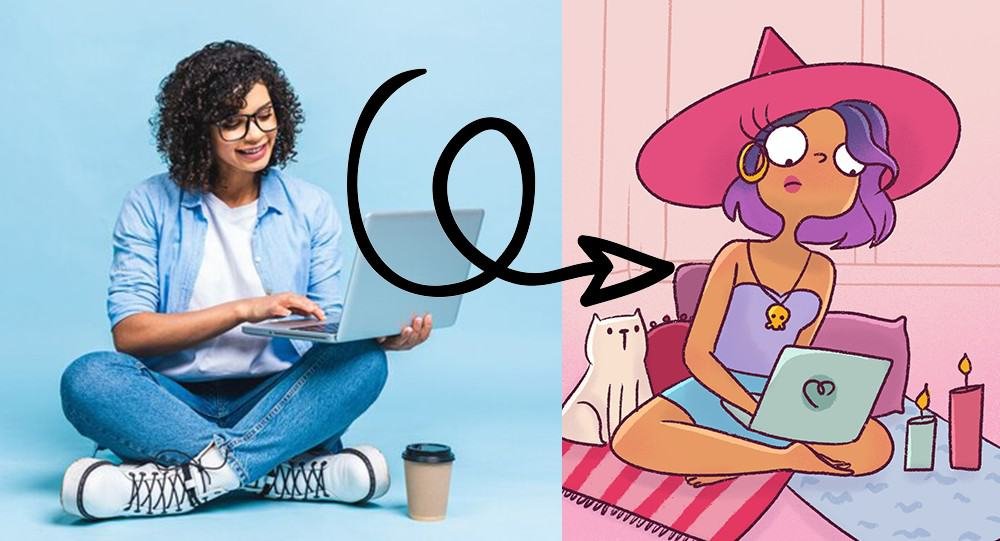
Once you learn enough human anatomy, you can do this without a reference.
But almost all artists use different references when drawing different objects. The drawing will not be an exact replica of the reference because the artist may need help only with certain things like:
- Drawing a background (The artist may use photos of fields or nature)
- Drawing a pose (The artist may use stock photos of a person dancing or sitting)
- Drawing certain elements (The artist may use movie stills to understand how certain objects are depicted)
Using references isn’t cheating in any sense.
Most artists and drawing teachers use them. And most of the online courses I take also teach students how to use references and draw.
In fact, Patricia from Don Corgi has a lovely post on the best websites to use for human references and poses.
3. Drawing from imagination entirely
Now, once you reach a certain level of drawing, you don’t require to use references whatsoever.
Many artists have reached this stage, and although it is possible, it does require a lot of work and drawing practice.
Please understand that it is perfectly okay to draw using references.
It isn’t considered cheating, and all of us artists use references, especially if we are drawing something we don’t have adequate practice in.
For instance, I don’t have much practice drawing vehicles.
I will look at a car if I want to draw a car.
But I draw female characters every day – I can pretty much draw them from imagination now. This is something I couldn’t do years ago.
Artists develop a huge visual library over time by drawing similar things every day.
It all boils down to practice – but there is more to it than that.
Let’s dive in.
How to Draw without a Reference – 6 Easy Methods
If you practice all of these methods consistently, you will reach a point where you will be able to draw without a reference.
Please note that this does involve putting in more hours of work – but the benefits of drawing without reference really is a goal most artists hope to achieve at some point!
It is commendable.
Here we go!
1. Understand the fundamentals of drawing
Skip this part if you already have a good understanding of the fundamentals.
In my post on how long it takes to learn how to draw, I explain all you need to learn to become better at drawing fast.
Basically, you need to learn the following:
- Learn human anatomy
- How to draw faces and expressions
- Color theory
- Figure drawing
- Understanding perspectives
- Backgrounds
These are your fundamentals.
If you don’t understand these drawing fundamentals – that’s okay.
Take your time to learn them.
Start by studying and drawing basic shapes so that you get that practice of drawing first.
You are strengthening your visual library as well as the muscles in your hand.
Remember, it does take a certain level of skill to translate what we have in our minds to what we’re drawing with our hands.
Once you understand and practice the fundamentals, drawing gets easier.
So, practice drawing shapes and shading first.
Here are some books to get you started with the basics:
This is the basic step you need to practice every day in order to get better at drawing.
2. Become very observant
People who draw from memory are incredibly observant.
They pay attention to what they see and commit those images to their memories.
If you notice that someone is drawing people without a reference, understand that they’ve either drawn many people in their lifetime or have memorized every pose and every gesture a human being could possibly make.
Practicing drawing is great.
But it is also crucial to be extremely observant.
No matter what it is, you want to draw, practice observing first.
If it is human anatomy you wish to study, observe human beings.
There are so many stock photo sites you can look at to gain access to references.
But more importantly, pay attention to the shapes that comprise the image:
- Study an object thoroughly – the shapes and the outlines
- Study the lighting – watch how light hits the object and where is light reflected
- Notice every single detail about the object
The idea behind memorizing things is to observe.
So, make observation a huge part of your daily drawing routine.
3. Practice drawing without looking at anything
Study an object or a scene thoroughly. Take as much time as you need.
There is no rush.
Remember, drawing is a hobby and a skill.
Its ultimate purpose is to relax and have fun.
So, take it all in.
Just study your environment.
And then, once you’ve finished looking at something – draw it from memory.
Keep repeating this exercise every day till you can get better at it.
Please note that every single skill you want to learn can be learned provided you exercise it.
Your visual library is like a muscle.
The more you practice using it, the better it becomes.
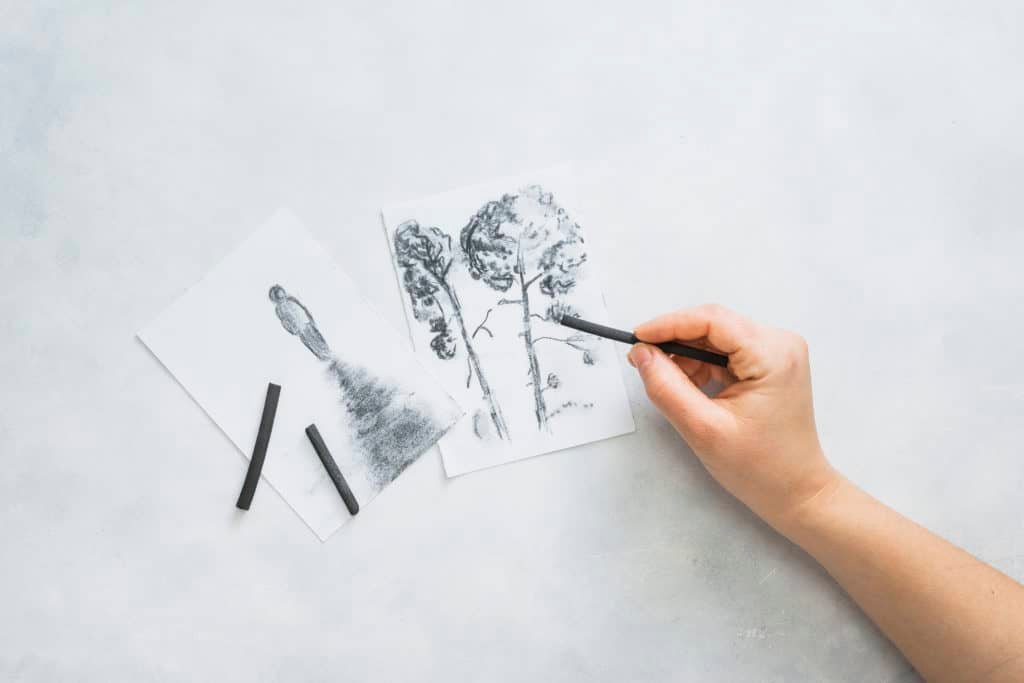
And the more times you use it, the stronger those objects get infused in your memory.
This is how you see a lot of artists drawing dragons and mythical creatures quickly without using references.
They’ve just spent an insane amount of time practicing drawing these creatures.
They initially used photo references or live references of drawing giant animals like horses or elephants or cows and big birds and dinosaurs.
And eventually, they’ve begun to understand what joints are moving and what are the limits of each joint.
Mixing and matching, they eventually draw creatures that are in their imagination using everything they have in their visual library.
How to draw poses without using a reference?
Step 1: Go to Quick Poses and select a body type you want to draw. Select an interval. Start with 300 seconds and start the challenge.
Step 2: You will have to draw the pose in the amount of time you’ve selected.
Repeat this exercise every single day.
Even if you’re drawing for 10 minutes a day, you’ll get so much better at drawing poses from your imagination.
4. Step out of your comfort zone
In this step, I want you to draw something that you are not comfortable with.
For instance, if you constantly draw a person’s face from the front view, switch it up!
Draw a side profile instead.
Step out of your comfort zone entirely.
A few ways you can start drawing things out of your comfort zone is to go out and draw what you see.
Drawing from images is an entirely different experience from drawing from reality.
When we draw from images, we translate objects in 2-D form onto paper.
When we draw from the real world, we are translating objects in 3D form onto the canvas.
These are two entirely different constructs.
Start drawing things in the real world.
Use a notebook and pencils for this. Don’t use a digital tablet. Drawing on paper will help you get the real feel of drawing.
Twist objects around and draw them from different angles.
Try simple objects first before you draw people and entire environments.
Draw objects on a table:
- Draw while looking first
- Observe for a while and draw without looking
Do both of these exercises every day.
You can go to cafes and draw people from a live view.
This will help you develop your live drawing skills.
Drawing from the comfort of your home is very different from drawing in the real world – it can be slightly uncomfortable at first – but this only means that you’re making stellar progress.
5. Measure proportions
It’s okay to use your thumb or your rulers to keep measuring proportions.
Understand perspectives – this will take a lot of time to learn.
This and shading.
Understanding how the light hits an object without any reference will undoubtedly take time to master.
It requires learning anatomy, construction, and a high level of learning of light and shadows.
So, keep measuring and keep adjusting your drawing.
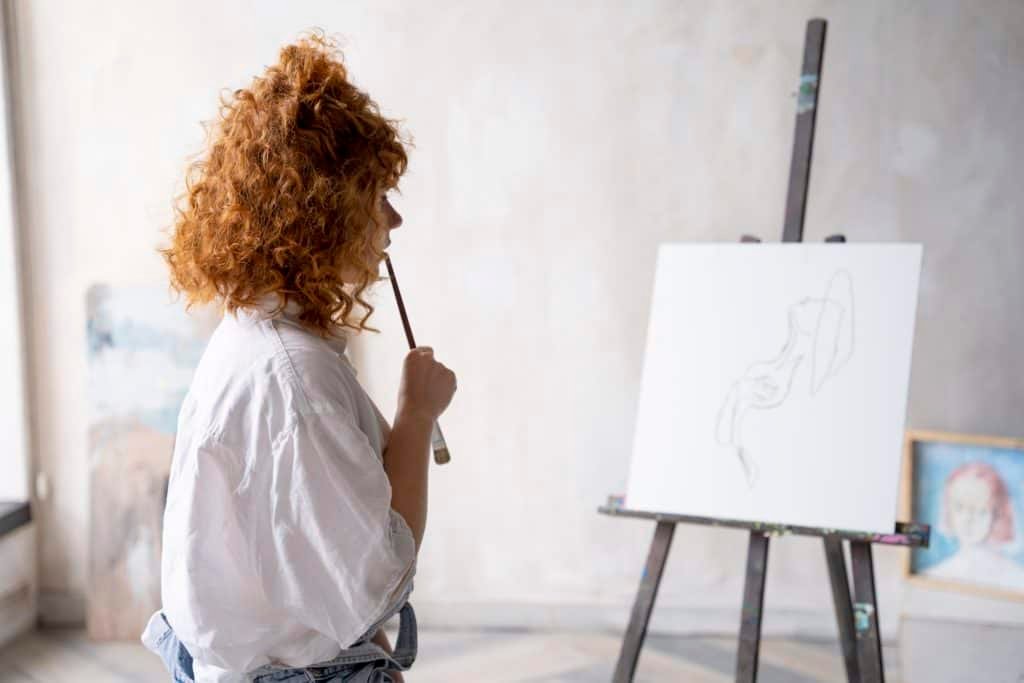
It’s okay to erase and adjust your drawing multiple times while you’re drawing without reference.
Draw rough lines and structures first before you start sketching in the details.
6. Be patient
Learning how to draw without a reference takes time.
This is not a skill that can be mastered in a day.
It is not something that comes to us without practice.
So, keep at it.
This is my best advice.
Keep practicing drawing without looking at a reference and see how your art progresses.
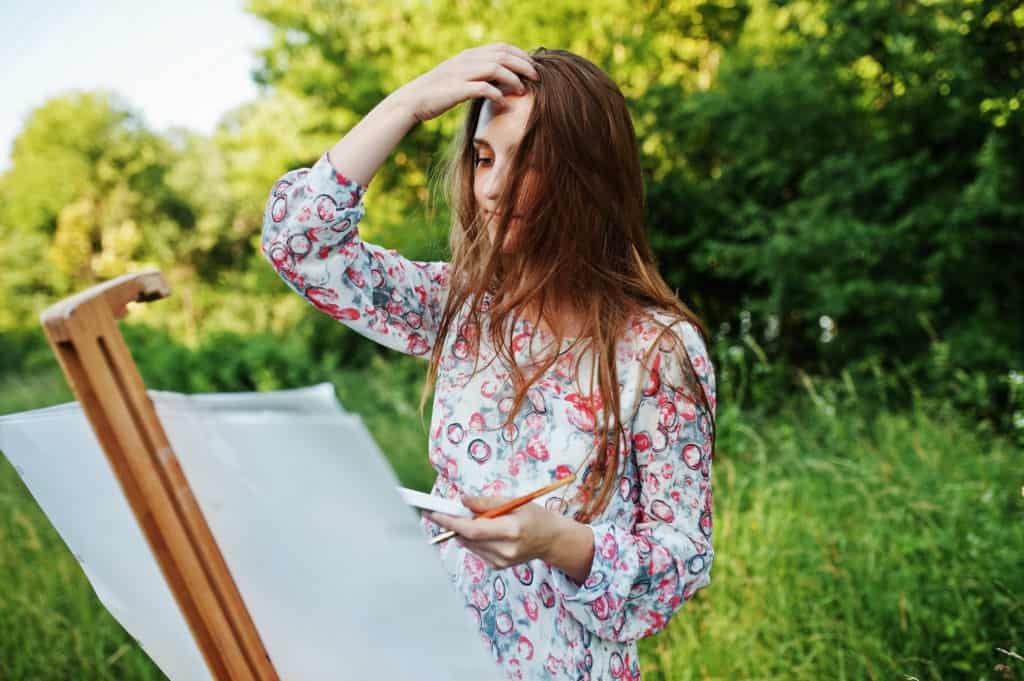
Make sure that you look at your work every few weeks to see how much you’ve grown – this will motivate you to keep going.
When you can see that you’ve made significant progress drawing without reference, you will be motivated to put more hours into drawing.
At first, your art will not look great when you choose to draw without a reference.
But eventually, it will get better.
You can’t be perfect when you start out – just like with any skill, drawing without a reference takes time and a lot of patience.
The only way we can ever get better at this is to keep practicing.
Conclusion
I hope this post helped you understand how to get to a place where you can learn how to draw without a reference.
It’s definitely not a walk in the park, but with consistent practice, you will get better.
Please remember that drawing with or without references is completely okay. It isn’t cheating in any sense.
I also recommend this online course: It will teach you how to draw people from your imagination without using references. It’s an in-depth and beautiful course.

Here are some posts you may enjoy:
- How to find your art style when you’re a beginner artist
- 13 signs you were meant to be an artist
- How long does it take to learn how to draw? (Explained)
- How to become a full-time artist without a degree
- 13 drawing mistakes most beginner artists make
- 9 drawing books for beginners
- Fun drawing gifts for children under 10 years old
- 13 easy ways to make money online as an artist
- 13 reasons why people like drawing + drawing benefits!











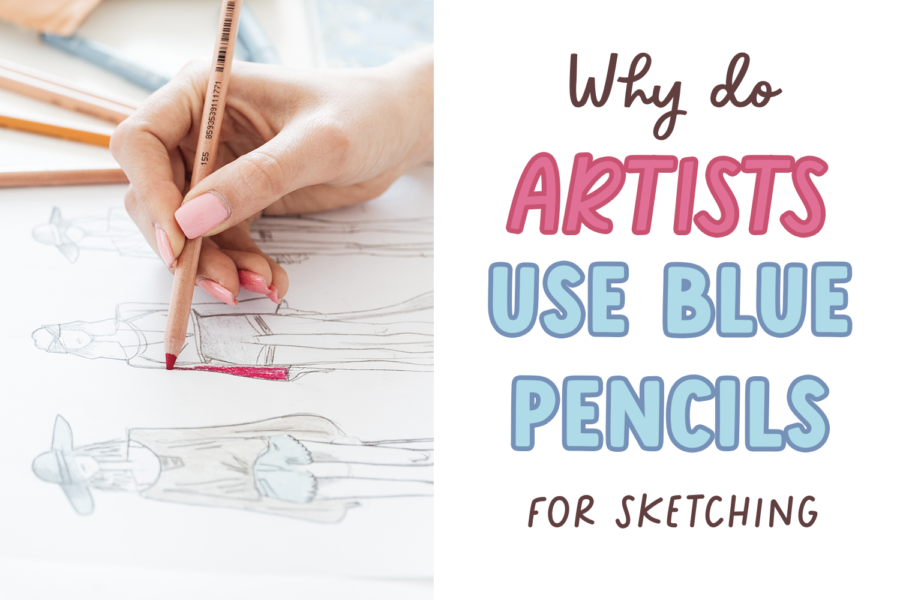
Leave a Comment